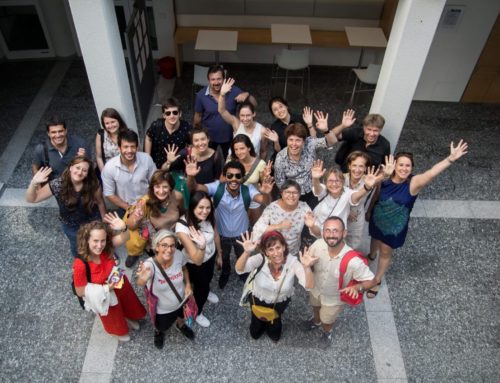PAPER (2018): “Minimal information for studies of extracellular vesicles 2018 (MISEV2018): a position statement of the International Society for Extracellular Vesicles and update of the MISEV2014 guidelines”.
On 2014, the Minimal information for studies of extracellular vesicles (MISEV) were studied and written by The International Society of Extracellular Vesicles (ISEV) that involves more than 300 investigators and scientists. This year they all sat together again to review their own work, and now they have published an update of the MISEV2014 guidelines based on evolution of the collective knowledge in the last for years. The MISEV2018 paper includes tables and outlines of suggested protocols and steps to follow to document specific EV-associated functional activities.
This work is going to have a great impact on the science community, because of that, we have interviewed one of the investigators of this work, who is also the coordinator of VES4US project.
Antonella Bongiovanni is a staff career researcher at the National Research Council (CNR) and the coordinator of the European project VES4US. She graduated in Biological Sciences at Palermo University, in 2001 awarded the Ph.D. in Cell Biology at the same University. She worked as Post-doctoral research associate and Visiting scientist in St. Jude Children Research Hospital, Memphis, U.S.A. She is interested in studying plasma membrane and cytoskeletal remodelling; in the last ten years she focused on extracellular vesicles, biogenesis and functional role, to the structural characterization of the membrane and to their possible use for human health.
What was your part in this project?
As active member of the International Society for Extracellular Vesicles (ISEV), and together with over 380 ISEV members, I’ve contributed to the update of the topics of Extracellular Vesicles (EV) nomenclature, separation, characterization and functional analysis. The goal of MISEV2018 is to become a guiding standard for researchers.
How did your role as coordinator of VES4US project influence your work as a researcher in this paper?
These experiences are highly interconnected, since VES4US project exploits the EV potential for human health and my knowledge of the EV field is also very well based on my activity within the international EV scientific community.
The first paper you published with some of your co-researchers from the ISEV community was “EVpedia: A Community Web Portal for Extracellular Vesicles Research”. How did this collaborative research begin?
In the last ten years my interest has turned to the study of extracellular vesicles, biogenesis and functional role, to the structural characterization of the membrane and to their possible use for human health.Thanks to this passionate interest, for many years I have been attending the international scientific community and the stakeholders working in the field of extracellular vesicles, having the chance to collaborate and discuss with many peers.
Which are the most relevant discoveries that you make on EVs?
Our studies have demonstrated for the first time the ability of muscle cells to release nanovesicles (i.e., exosomes) directly from their plasma membrane (Romancino et al., FEBS Letters 2013). These nano-vesicles may represent a previously undiscovered cellular communication system in skeletal muscle.
Why did you focus on skeletal muscle EVs from mammals instead of any other cell types?
In those years, research on extracellular nanovesicles has focused primarily on the immune system and tumor cells; however, I was always fascinated on basic mechanism underlying cell function, including how cells can communicate between them.
What is the main novelty of MISEV 2018?
The first Minimal Information for Studies of Extracellular Vesicles (MISEV) guidelines were released in 2014 by the International Society for Extracellular Vesicles (ISEV) to offer guidance in standardization of protocols and reporting in the extracellular vesicle field. MISEV2018 recommends the use of ‘extracellular vesicle’ (EVs) as the proper terminology for use in publications, stresses the need to report EV separation and concentration options clearly and accurately, highlights the importance to establish presence of EVs by evaluating EV-enriched markers and non EV-depleted markers. A handily checklist summarizing the main points is also included.
You can find the paper on VES4US website, or download it through this link.







Leave A Comment